Treatment for Hemorrhoids
Hemorrhoids
5/8/2023
5 Types Of Surgery For Hemorrhoids
What are the types of surgery for hemorrhoids?
- Rubber Band Ligation
- Coagulation Therapy
- Sclerotherapy
- Hemorrhoidectomy
- Hemorrhoid stapling
Like any health condition, hemorrhoids can have many complications if left untreated. The fact that it can heal on its own does not mean that being carefree is advisable. A severe case of hemorrhoids is harrowing and costly, as there is a significant chance that you would need to undergo surgery. You would want to avoid this as much as possible for obvious reasons, but unfortunately, any other treatment doesn’t work for some people.
Still, the availability of the different types of surgery for hemorrhoids gives those who need them a choice to get better. Some procedures can be done in the doctor’s office, while others need to be done in the OR. These surgeries all depend on the severity of the case and what your doctor recommends for you. Since hemorrhoids are the swelling of a vein in your rectum, removing the hemorrhoid will help you heal faster and be more comfortable.

Learn more about the types of hemorrhoid surgery
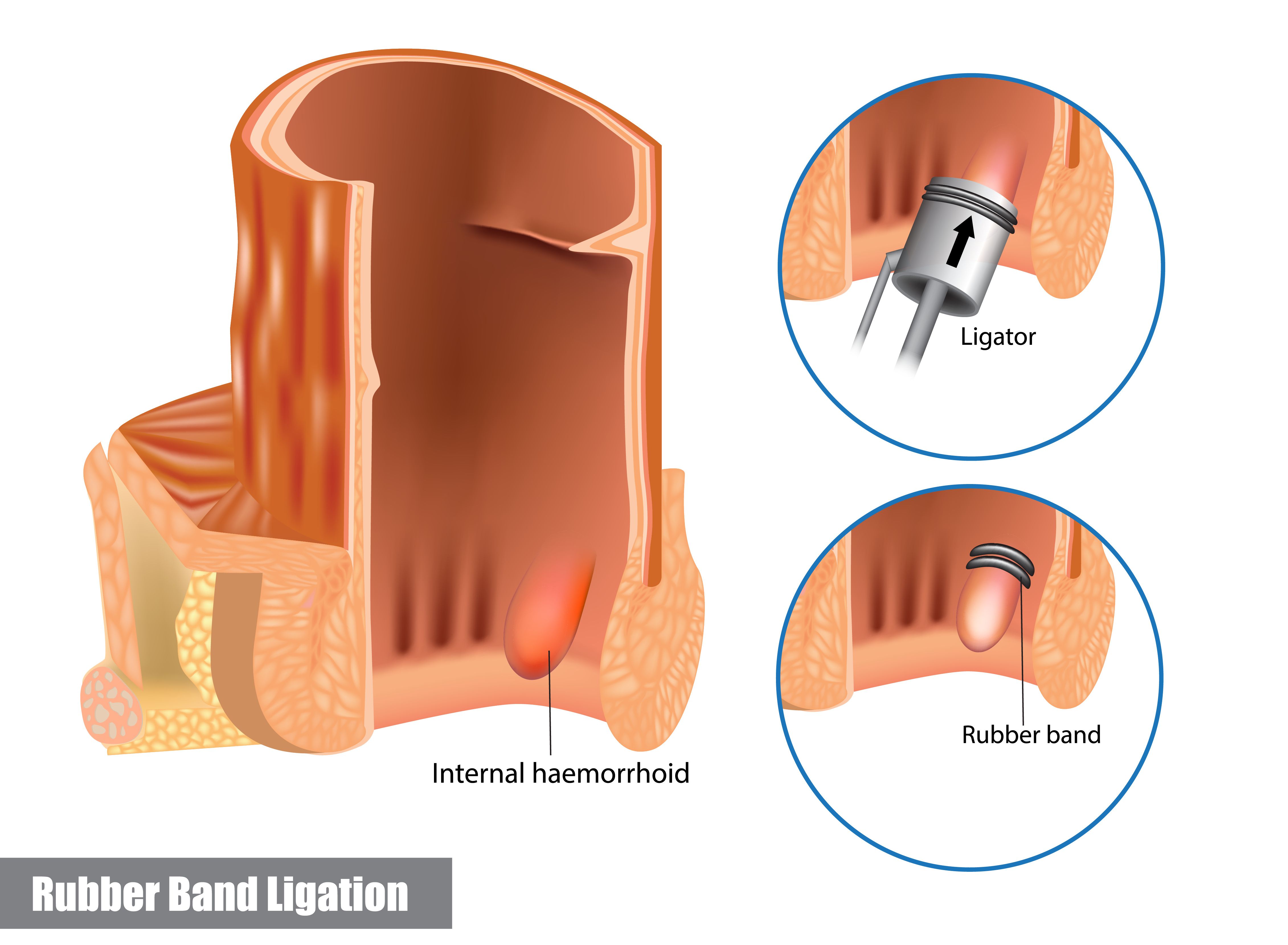
Rubber Band Ligation
Rubber band ligation, also called banding, is the procedure that puts a rubber band on the base of the hemorrhoid to cut off its circulation. It is often performed if you have a prolapsed and bleeding internal hemorrhoid.1 Without blood supply, the hemorrhoid will wither away and fall off in a few days.3 This procedure is less invasive than other surgeries on this list, and it needs no anesthesia at all. You also don’t need an OR to do this procedure.
If you’re taking blood thinners, this procedure is not recommended for you because of the risk of bleeding complications. The good thing about rubber band ligation is that it needs little recovery time and additional complications, such as pain and infection, are rare.4
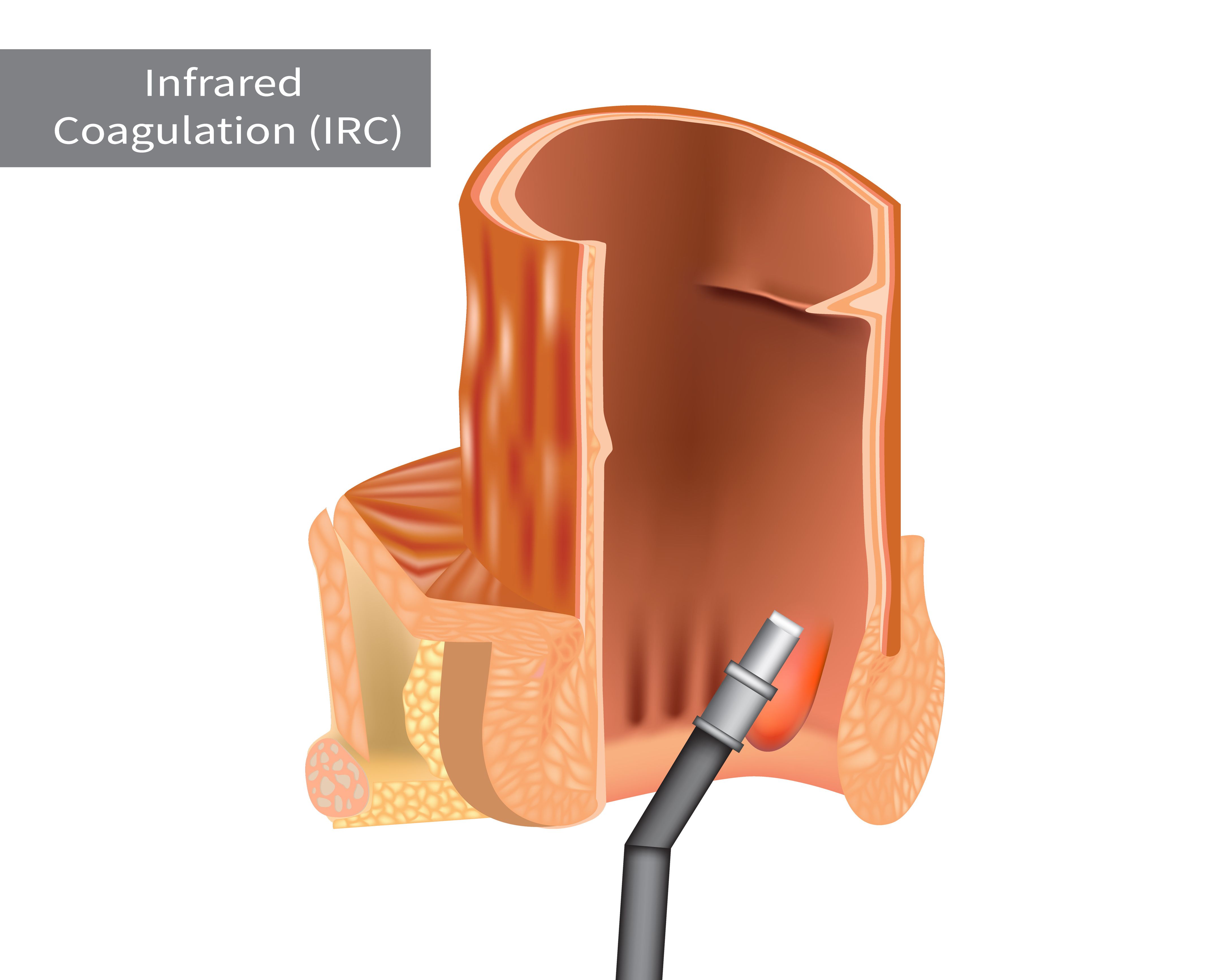
Coagulation Therapy
Internal hemorrhoids that are bleeding and not prolapsed are treated with coagulation therapy or infrared photocoagulation. In this procedure, the doctor will create scar tissue on the hemorrhoid by using an electric current or infrared light.1 The buildup of this tissue will cut off the blood supply of the hemorrhoid which will then wither away and fall off. Patients mostly only experience some mild discomfort and cramping during the procedure.
Coagulation is done with an anoscopy, a way to see inside your rectum by inserting a scope. Like rubber band ligation, you would not need an OR to perform this surgery and a doctor’s office would suffice.4
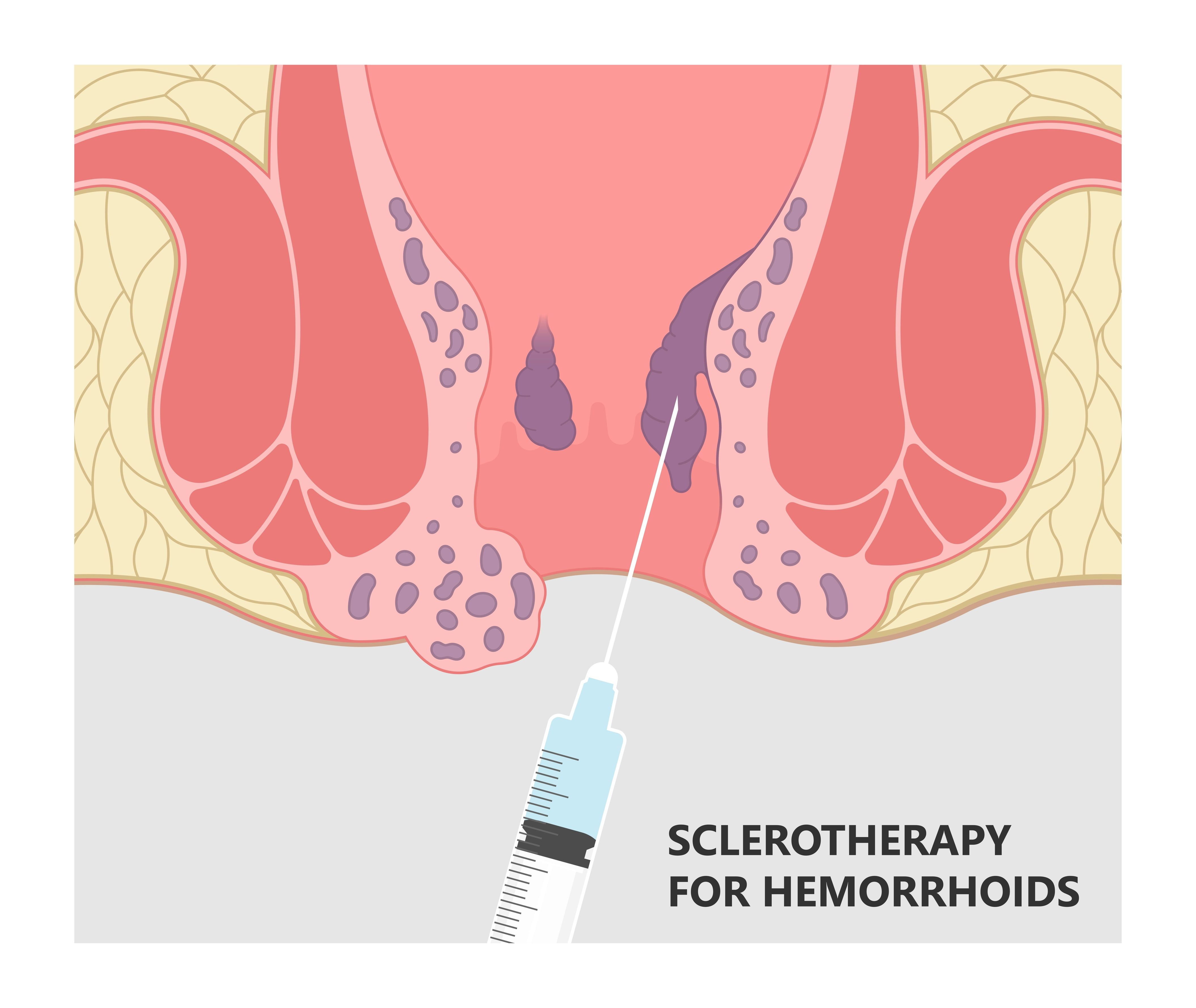
Sclerotherapy
Sclerotherapy is the process of injecting chemicals into an internal hemorrhoid to relieve pain and to make scar tissue form.1 Like coagulation, the scar tissue will cut off the blood supply to the hemorrhoid. Again, it will wither away and fall off. This is the better option if you’re on blood thinners as your skin doesn’t need to be cut open.4
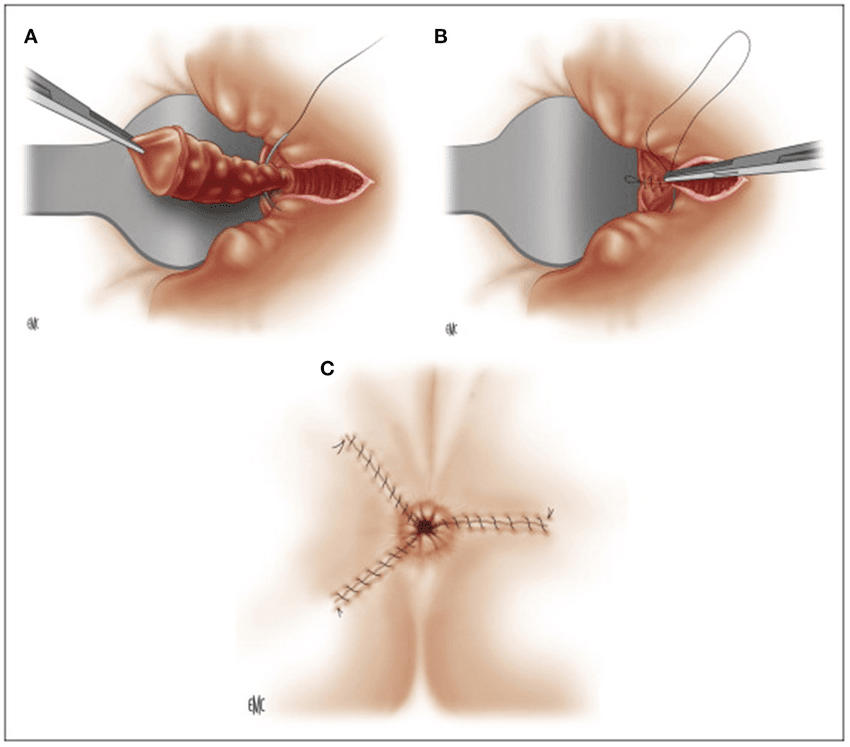
Hemorrhoidectomy
A hemorrhoidectomy is done in the hospital with anesthesia. During the surgery, the surgeon will gently cut away the hemorrhoid, removing it completely and effectively. You might need stitches depending on the doctor’s call, but the surgery generally causes discomfort in the area after.1 The surgeon may use instruments such as surgical scissors or a laser.
This surgery has many potential complications, such as delayed bleeding, pain, fecal impaction, and more rarely, infection. It is also the treatment that causes the most discomfort and pain, but it gives the best results in the long term and has very low recurrence rates.3 There are several types of hemorrhoidectomies:
Closed Hemorrhoidectomy:
A closed hemorrhoidectomy means that after removing your hemorrhoids, the surgeon will completely close up the wound with absorbable sutures. This procedure is successful 95% of the time.3
Open Hemorrhoidectomy:
If you had an open hemorrhoidectomy, this means that the surgeon elected not to close up the incision. The reasons for this include the location of the procedure or how many hemorrhoids were excised, making the wound difficult to close. A combination of closed and open hemorrhoidectomies is often utilized.3
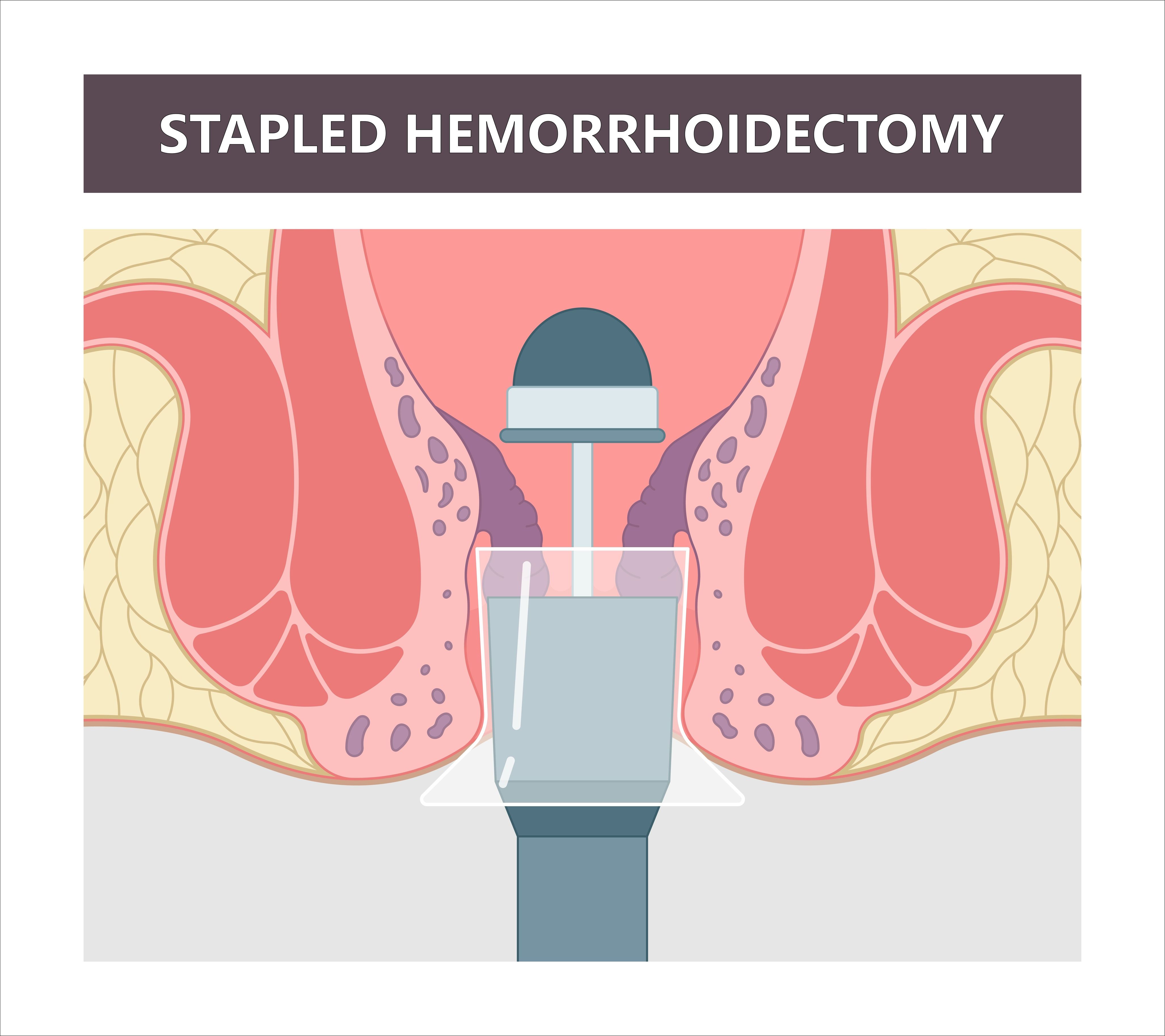
Hemorrhoid stapling
Hemorrhoid stapling is used for internal hemorrhoids, often when they have grown too large and/or have prolapsed. During this hemorrhoid surgery, the surgeon will use a circular stapling device to secure the hemorrhoids back to their original position. It will also restrict blood flow to the hemorrhoids, making them shrink in size until they disappear completely.1 This surgery causes less postoperative pain and discomfort than a traditional hemorrhoidectomy, and it also takes less time to recover. Still, it has high rates of recurrence in the long run.
Key Takeaway
The types of surgery for hemorrhoids are there for your doctors to make the right decision for you. As a patient, you have the right to learn about the procedures that you may undergo, but it is more advisable to listen to your doctor’s advice as they know what’s best for you, even if it may seem unpleasant.
Of course, the best way to avoid having to experience any type of hemorrhoid surgery is by preventing harmful complications in the first place. To do that, you can try one of the most effective hemorrhoid tablets in the Philippines: Diosmin + Hesperidin (Daflon 1000)!
References
- https://www.medicalnewstoday.com/articles/324439#types
- https://www.webmd.com/digestive-disorders/surgery-treat-hemorrhoids
- https://surgery.ucsf.edu/conditions--procedures/hemorrhoidectomy.aspx
- https://www.healthline.com/health/hemorrhoid-surgery#surgery-types
2025